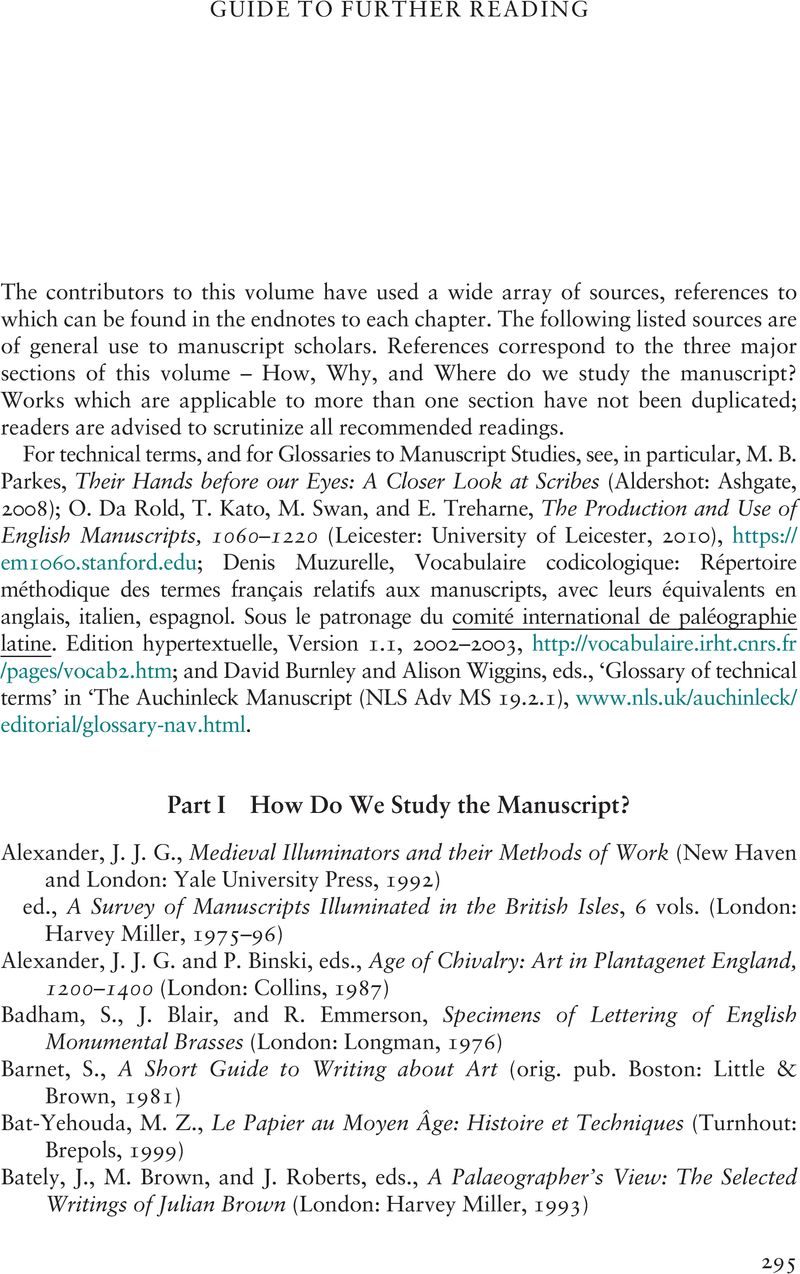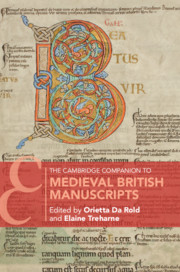Book contents
- The Cambridge Companion to Medieval British Manuscripts
- The Cambridge Companion to Medieval British Manuscripts
- Copyright page
- Contents
- Illustrations
- Contributors
- Acknowledgements
- Abbreviations
- Introduction: The Matter of Manuscripts and Methodologies
- Part I How Do We Study the Manuscript?
- Part II Why Do We Study the Manuscript?
- Part III Where Do We Study the Manuscript?
- Guide to Further Reading
- Index
- GENERAL INDEX
- Cambridge Companions To …
- References
Guide to Further Reading
Published online by Cambridge University Press: 11 December 2020
- The Cambridge Companion to Medieval British Manuscripts
- The Cambridge Companion to Medieval British Manuscripts
- Copyright page
- Contents
- Illustrations
- Contributors
- Acknowledgements
- Abbreviations
- Introduction: The Matter of Manuscripts and Methodologies
- Part I How Do We Study the Manuscript?
- Part II Why Do We Study the Manuscript?
- Part III Where Do We Study the Manuscript?
- Guide to Further Reading
- Index
- GENERAL INDEX
- Cambridge Companions To …
- References
Summary

- Type
- Chapter
- Information
- The Cambridge Companion to Medieval British Manuscripts , pp. 295 - 307Publisher: Cambridge University PressPrint publication year: 2020



